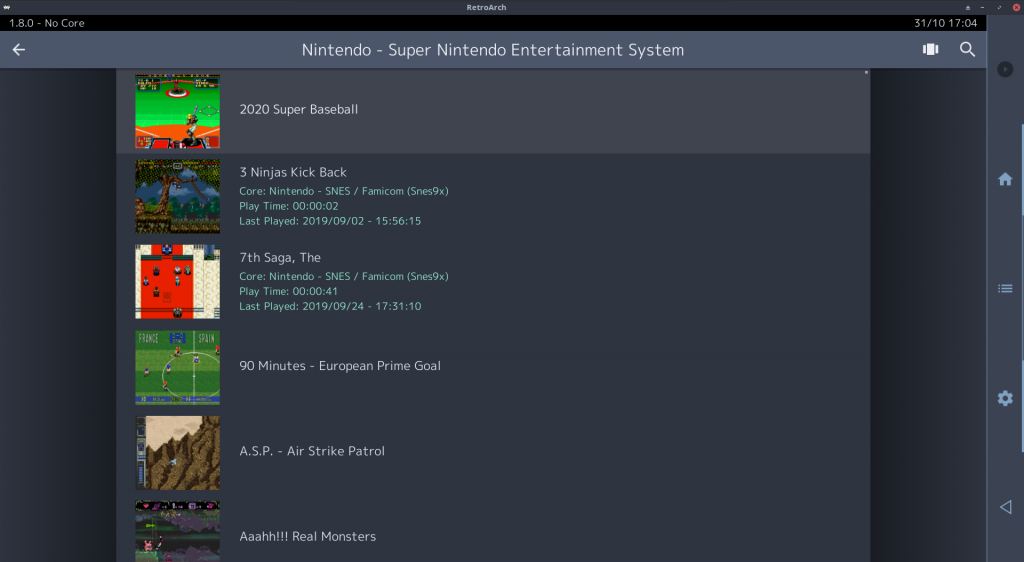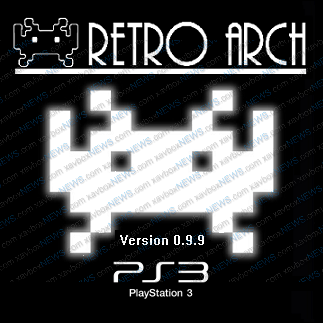
- #Retroarch initial release how to#
- #Retroarch initial release install#
- #Retroarch initial release update#
- #Retroarch initial release upgrade#
- #Retroarch initial release software#
If you don’t have the snap package manager in your OpenSUSE OS, follow the installation instructions below:Īdd the snappy repository to your OpenSUSE operating system using the command below: sudo zypper addrepo -refresh snappyĪfter downloading the repository, we shall then import its GPG key: sudo zypper -gpg-auto-import-keys refresh

#Retroarch initial release install#
The Snap package manager contains the Retroarch application making it easier to install it to OpenSUSE. Hence in such an instance, we shall use the snap package manager to install the application into our operating system.

OpenSUSE does not have Retroarch repositories, making it hard to install the application directly using the default application manager (Zypper). Open the terminal and execute the command below: sudo dnf install rpmfusion –y Installing Retroarch on OpenSUSE We shall do this with the assistance of the DNF package manager. Once the installation is successful, you will now proceed to the final stage, installing Retroarch into your Fedora Operating system. Open your terminal, copy/paste, and execute the following command: sudo dnf install Note: we shall use the wget command to download the required repositories to your Fedora operating system.Īfter successfully downloading the third part repositories into your Fedora OS, we shall use the operational command DNF for installation. Open the terminal and input the following command to add the repositories. For this application to work with your Fedora, we shall use third-party repositories. To install the application, stick to the guide below. The primary reason why installing this application seems hard is that the Fedora DevOps’ has not included its repositories. Most people find it hard, but don’t worry since we are here to simplify your complexities. This is done by adding a symbolic link in between, as shown in the code sudo ln -s /var/lib/snapd/snap /snapįinally, install Retroarch by executing the following command sudo snap install retroarch Installing Retroarch on Fedoraįedora users are not left out since there is a workaround to install the Retroarch emulator. Use the command below to enable classic snap support. execute the command below: sudo systemctl enable -now snapd.socket This can be done using the command below: git clone Īfter enabling snap, you need to enable the systemd unit, which manages snap communications. Next, you will import the PPA key using the command below: sudo apt-key adv - keyserver -recv-keys 3B2BA0B6750986899B189AFF18DAAE7FECA3745FĪfter installing Retroarch, use the apt command to install the RetroArch application sudo apt updateĪlternatively, you can enable snap then install using Retroarch. Open your terminal, copy/paste, and execute the following command: pacman -S retroarch The Pacman package manager is helpful while installing the Retroarch repositories on Arch Linux. Generally, Retroarch is the official Arch Linux repositories that can be installed with PacMan. Sudo apt install snapd Installing snapd sudo snap install core Install coreĪfter installing snap now install the Retroarch application using the command below: sudo snap install retroarch Installing RetroArch on Arch Linux
#Retroarch initial release update#
Alternatively, you can install snap on Debian 9 and above using the command lines below: sudo apt update Snaps can be easily installed from the Snap Store. Snap is an application packaged with all the required dependencies to run on Linux distros from a single build. To install Retroarch on Debian, we will first install and enable Snap. Open your terminal, copy/paste, and execute the following command: sudo apt install retroarch -y Installing RetroArch on Debian
#Retroarch initial release upgrade#
Execute the following command to upgrade your OS: sudo apt upgrade –yįinally, now let us install Retroarch into our Ubuntu System.

You can do so by executing the command line below: sudo apt updateĪlternatively, you can also upgrade your system to make sure all applications are up to date. The next step is to update your Ubuntu OS.
#Retroarch initial release how to#
sudo add-apt-repository ppa:libretro/stable How to install retroarch PPA on ubuntu Run the command below to install the Retroarch PPA onto your Ubuntu operating system.

At times, you need to use the developers’ PPA to get the latest version of Retroarch.
#Retroarch initial release software#
Ubuntu’s software repositories have the current version of the Retroarch emulation tool. The emulation of the consoles is made possible with the help of the package installer that is used in installing the apps. Retroarch is an emulation tool that allows users to emulate various consoles, such as Sega Genesis, Nintendo Wii, and the Commodore 64.


 0 kommentar(er)
0 kommentar(er)
